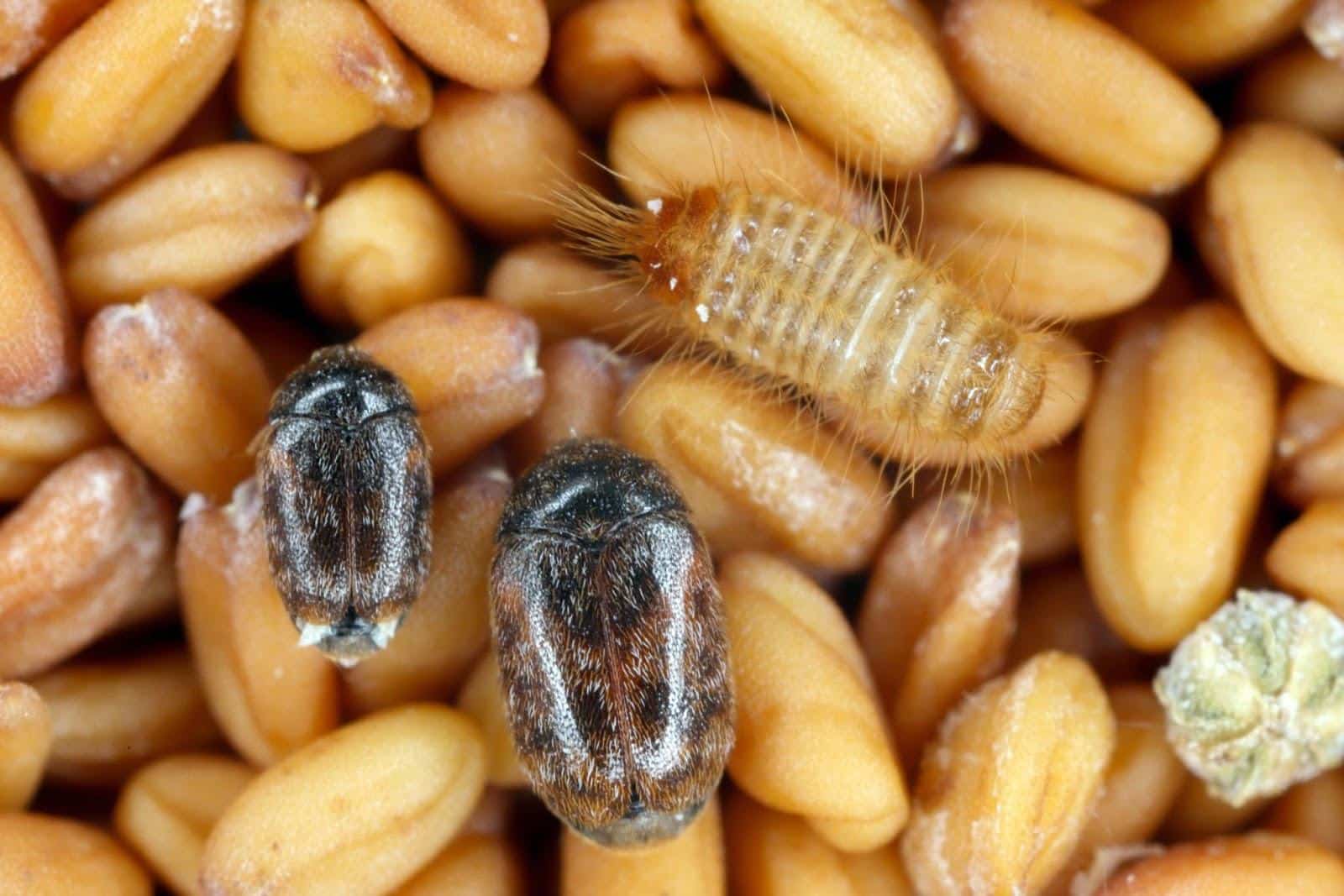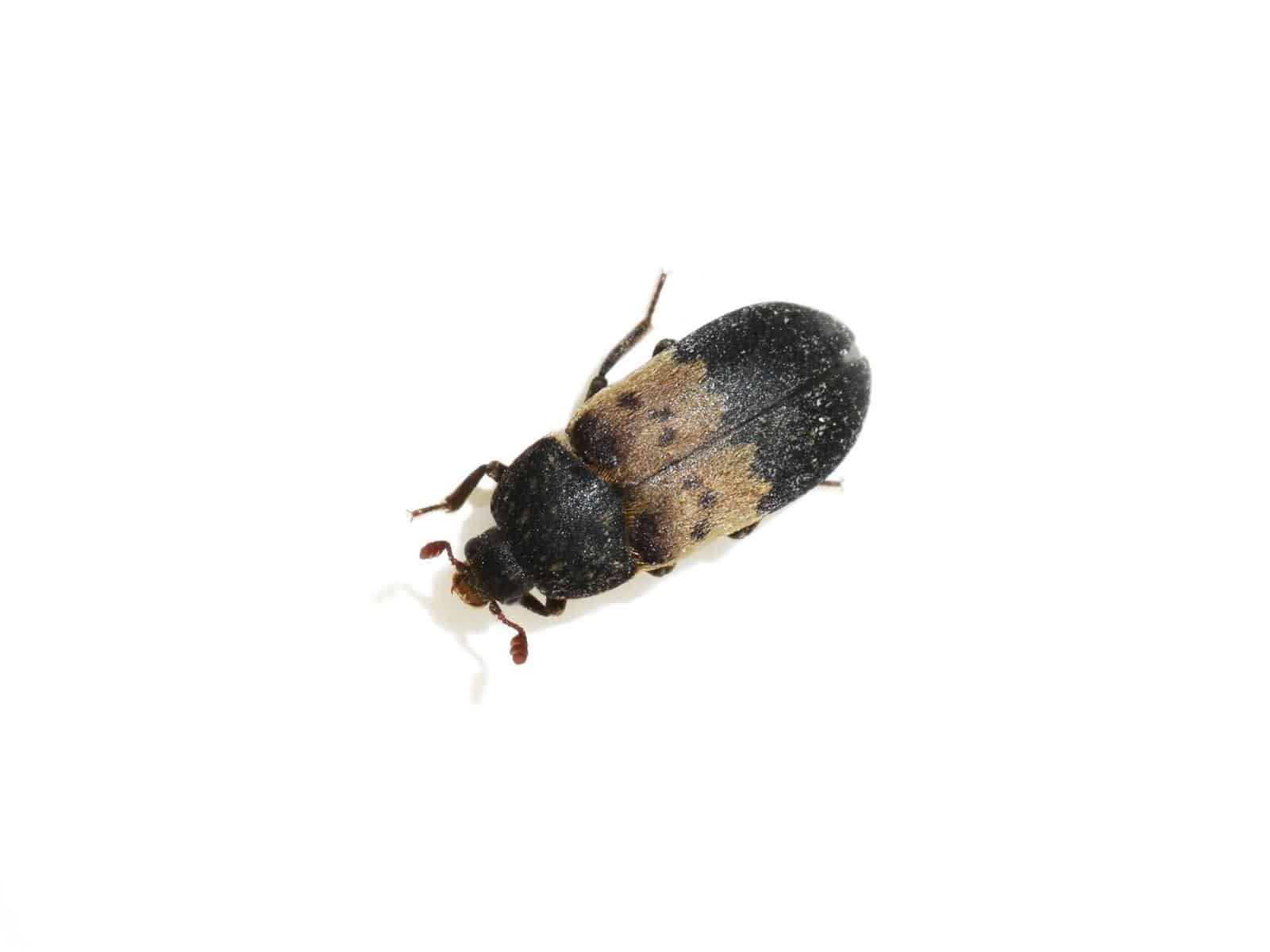Dermestid beetles are important for taxidermy. As larvae, they feed on dead tissue with high efficiency, leaving behind nothing but bone, which is ideal for people who want to keep deer, bear, and other specimens. To get the desired results, it’s important to know how to care for your Dermestids. Here, you can learn how to do this and where to find dermestid beetles for sale.
How Many Beetles Do I Need?
To start, you will need a beetle colony of at least 300 individuals. The amount depends on the size of the specimen and if you are willing to grow the colony to the minimum size to clean specimens. For something the size of a bear or deer skull, you’ll need from 1,000 to 5,000 beetle larvae, or more, to remove all the dead tissue.
Beetle Life Cycle
Knowing the life cycle of the flesh-eating beetle, Dermestes maculatus, can help you plan out your project. The species has a lifespan of four to five months, and it is the larvae that do most of the feeding.
Once eggs are laid, they hatch in four days (females lay hundreds of eggs at a time). The larvae grow over a period of five to six weeks, during which they’ll molt seven to nine times. After this point, they bore into the ground or other substrate and the larvae go into a seven- to eight-day pupal stage before emerging as adults.
What Dermestid Beetles Need to Thrive
To get your beetles to keep eating, they need to be properly cared for. Skeletonization is a delicate process and most efficiently done by dermestid beetles. The right conditions are needed whether you’re a taxidermist, researcher, or forensic scientist, and includes the following:
- Shelter: A storage container can range from a bin to aquarium with a screen top, to plastic tote or tub. The beetles don’t prefer any particular type of container or size. It’s only the source of food that really keeps them going in their environment. However, the bin should match the size of the colony to best accommodate the beetles.
- Food Source: Of course you want the beetles to feed on your specimen. But you can still maintain the colony in between specimens with dry meat or fish. They also need to stay hydrated. You can do this by spraying the specimen with water or putting a wet paper towel in the container. The beetles will “drink” the water from these sources.
- Temperature: Dermestid beetles don’t fly in temperatures below 80° F. And below 65° F, they’ll be less active. It’s therefore important to keep the temperature within this range so the beetles continue to feed and don’t fly away.
- Light: Maintain the desired temperature with a heating element that doesn’t emit light, as the beetles tend to be more efficient when it is dark. Heat lamps are inappropriate for this setting. You can find heating pads or mats in a pet store.
- Air Circulation: You want to keep the container covered so the beetles can’t get out and other bugs can’t get in. However, the beetles must have air to breathe, so a screened lid will do. It should be properly framed so it rests atop the container and seals it. Depending on the material of the cover, you can get by with adding air holes.
- Substrate/Bedding: Shredded paper, wood shavings, wood mulch that is not cedar, Styrofoam, and even commercial mammal bedding are suitable living environments. The beetles will chew up the material; combined with their waste, a powdery material known as frass is created.
Other Dermestid Beetle Care Tips
A thriving colony is needed to take on a taxidermy project. You’ll need to feed the beetles for 30 to 60 days beforehand. During that time, they need to feed on animal material. But don’t put in too much at a time as overfeeding can harm the beetles. Make sure not to add more than 24 hours’ worth of material; you’ll also need to adjust the amount as the colony grows.
You don’t need a particularly large container. So long as there is unlimited food, dermestids will pack tightly together. It’s often better to have just enough room for the target skull or other specimen, so the beetles will concentrate on cleaning and reproduction. For larger materials or even small commercial operations, a vented chest freezer will do. It’s typically well-insulated and not impacted by outside temperatures.

Odor Control
You can expect some odor as beetles feed on the material. It’s usually not too bad, but it can stick to clothing and be undesirable for some. Brain tissue can be particularly stinky. You can remove it beforehand to avoid most of the odor.
Also, having too few beetles in the colony to consume the flesh fast enough can lead to rotting, which can cause odors. In addition to having a large-enough colony, it helps to keep things dry.
How to Keep Pests Out
To avoid mites, keep the container dry so mites are less likely to survive. It also helps to maintain proper air circulation, which can prevent mold as well. You can prevent fly infestations by ensuring there are no fly eggs on any material given to the beetles. Always introduce a fresh specimen and if you’re not sure about the material you’re giving the colony, freeze it first.
Is It Safe to Care for Dermestid Beetles?
They are not harmful to humans, other living animals, or the environment. A flesh-eating beetle will not bite a person. Nor does it carry diseases. Dermestid is not an invasive species. You do not need a permit to raise a colony and, if you no longer need them, you can give them to someone or release them into the wild. They’ll carry on their beetle lives just fine in the woods.
Buy Dermestid Beetles Online Today
At Kodiak Bones & Bugs Taxidermy, we have dermestid beetles for sale. We supply healthy colonies and assist with all after-sales support to address your questions and concerns. Browse our online resources to learn more, contact us online for assistance, or call 907-942-2847 today.

